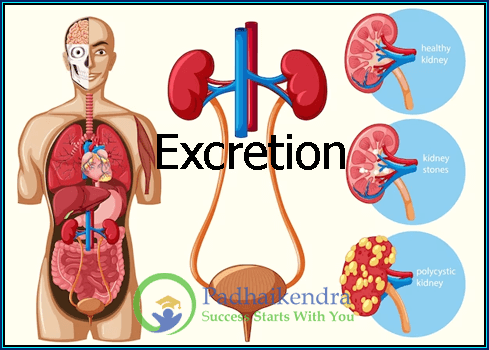Excretion: A Natural Process of Elimination
Excretion is a fascinating and essential process that occurs in various living organisms, ensuring the removal of waste materials and harmful substances from their bodies. It’s a vital mechanism that helps maintain a healthy internal environment, allowing organisms to function efficiently and thrive in their respective habitats. In this article, we’ll delve into excretion, exploring how it takes place in plants, humans, and other animals, with a focus on secretion in urine formation and kidney function. Let’s embark on this journey of elimination!
Excretion in Plants
Plants may seem serene, but beneath their green façade, they are actively involved in the process of excretion. They do not have complex excretory organs like animals, but they can get rid of waste materials through simple processes. One way is through the shedding of leaves, which allows plants to discard older and less efficient parts. Additionally, some waste substances are stored in specialized structures, such as plant vacuoles or bark, and later released or shed. This helps plants maintain their vitality and overall health.
Excretion in Humans
In the realm of human biology, excretion plays a pivotal role in maintaining the body’s internal balance. The process primarily involves the elimination of waste products resulting from metabolic activities, such as carbon dioxide and water vapor, through the respiratory system. However, the most well-known form of excretion in humans occurs through the urinary system.
Secretion in Urine Formation
The urinary system is responsible for producing, storing, and eliminating urine, a liquid waste product. One of the key processes in urine formation is secretion. In this step, the kidneys selectively transfer certain substances, like hydrogen ions and waste products like creatinine and urea, from the blood to the urine. The kidney acts like a smart filter, separating the useful substances the body needs to retain from the harmful waste materials that need to be expelled.
Secretion in Kidney
The kidney is a remarkable organ responsible for filtering and regulating the composition of blood. It comprises thousands of tiny filtering units called nephrons, each of which performs the crucial task of filtering blood and producing urine. During secretion, these nephrons actively move waste products and excess substances into the urine, which will be later excreted from the body.
Urine Excretion
Once the urine is formed in the kidney, it travels through tubes called ureters and is stored temporarily in the urinary bladder. When the bladder fills up to a certain capacity, the body sends signals to the brain, prompting the urge to urinate. The process of urination involves the expulsion of urine from the body through the urethra, completing the cycle of urine excretion.
Aminotelic and Nitrogen Excretion
Animals vary in how they excrete nitrogenous waste, depending on their evolutionary adaptations. Aminotelic organisms, like mammals, birds, and most terrestrial animals, eliminate nitrogen primarily in the form of urea, which is less toxic and requires less water for excretion. On the other hand, ammonotelic animals, like fish and aquatic organisms, release nitrogenous waste in the form of ammonia, which easily dissolves in water but requires a lot of water for dilution and removal.
Excretory System in Animals
In the animal kingdom, the excretory system varies greatly across species. It primarily involves organs like kidneys, skin, lungs, and specialized excretory structures. These organs work harmoniously to rid the body of waste materials, ensuring the internal environment remains conducive to proper bodily functions.
Liver Excretion
The liver, often called the body’s chemical factory, plays a significant role in excretion. It helps metabolize and eliminate various toxins and waste products from the bloodstream. Additionally, the liver is responsible for the production of bile, a fluid that aids in the digestion of fats. We will explore the connection between the liver, bile production, and excretion in the following section.
Bile Production and Excretion
The liver produces bile, a greenish-yellow fluid that contains bile salts and waste products like bilirubin, which are by-products of the breakdown of red blood cells. Bile is stored in the gallbladder and released into the small intestine when needed. Bile salts assist in fat digestion and absorption, while bilirubin is eventually eliminated through feces, representing another form of excretion in the human body.
Afferent Arteriole
The afferent arteriole is a tiny blood vessel that plays a crucial role in the kidney’s excretory function. It supplies blood to the glomerulus, a specialized network of capillaries within the nephron. The glomerulus acts as a filter, allowing water, waste products, and certain ions to pass through into the nephron for further processing and eventual excretion as urine.
Excretion is a natural and indispensable process that ensures the removal of waste materials and harmful substances from living organisms, allowing them to maintain a balanced internal environment. From plants to humans and animals, the mechanisms of excretion may vary, but the ultimate goal remains the same: to eliminate waste and make way for a healthier, more vibrant life. Understanding excretion provides us with valuable insights into the fascinating world of biology and how living beings adapt to their environments to survive and thrive.





